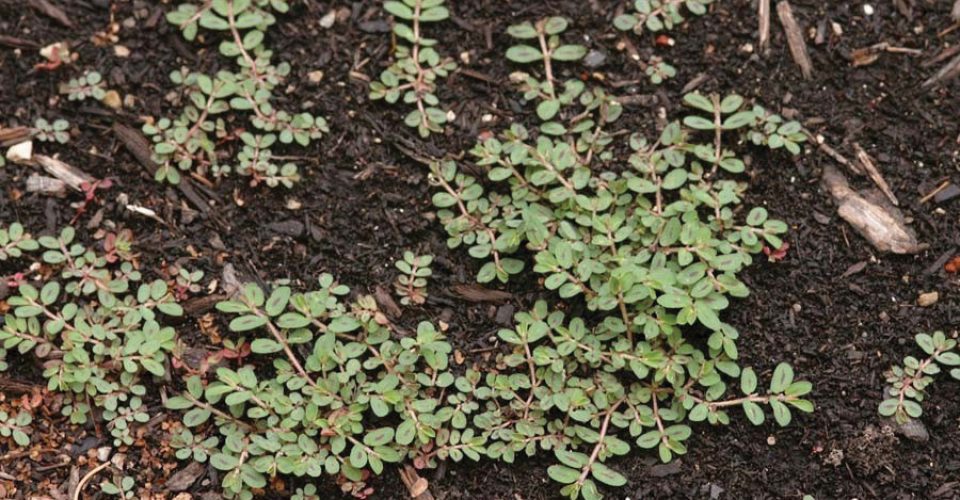Spotted spurge (Euphorbia maculata)
Spotted spurge is an annual forb that is found throughout the country in a wide variety of soils. It is also known as prostrate spurge for its ability to form a dense mat on the soil surface.
Spotted spurge prefers full sun and a very hot environment to grow. Cracks in asphalt driveways, parking lots and disturbed areas are a favorite place to find this plant. It is referred to as a pioneer species in ecological succession because it is often the first plant to cover the soil surface.
- Has reddish, hairy stems
- Gets its name from leaves that have a black dash in the center
- Leaves are oval and elongate, up to half an inch in length and growing in opposite pairs along the stem
- Has very small white to pink flowers with 4 petals
- Is a cousin to another spurge called snow-on-the prairie
Spotted spurge is a poisonous plant with a milky white sap found in the stem that can act as a skin irritant and carcinogen.
It is said that in the early years of cattle ranching in Texas, a paste was made from the sap of the plants and used as a smear to brand animals. Firewood was hard to find, and the irritation from the sap was adequate to scar the hide and make a legible brand.
Spotted surge can be controlled by herbicides if it becomes a serious problem in landscapes.
Editor’s note: Kent Ferguson, retired rangeland management specialist from USDA Natural Resources Conservation Service (NRCS), is providing us with plant identification photo stories to help ranchers identify those forbs, forages and species growing in the pastures. Additional photos provided by USDA NRCS.
Spotted Spurge is excerpted from the September 2015 issue of The Cattleman magazine.




